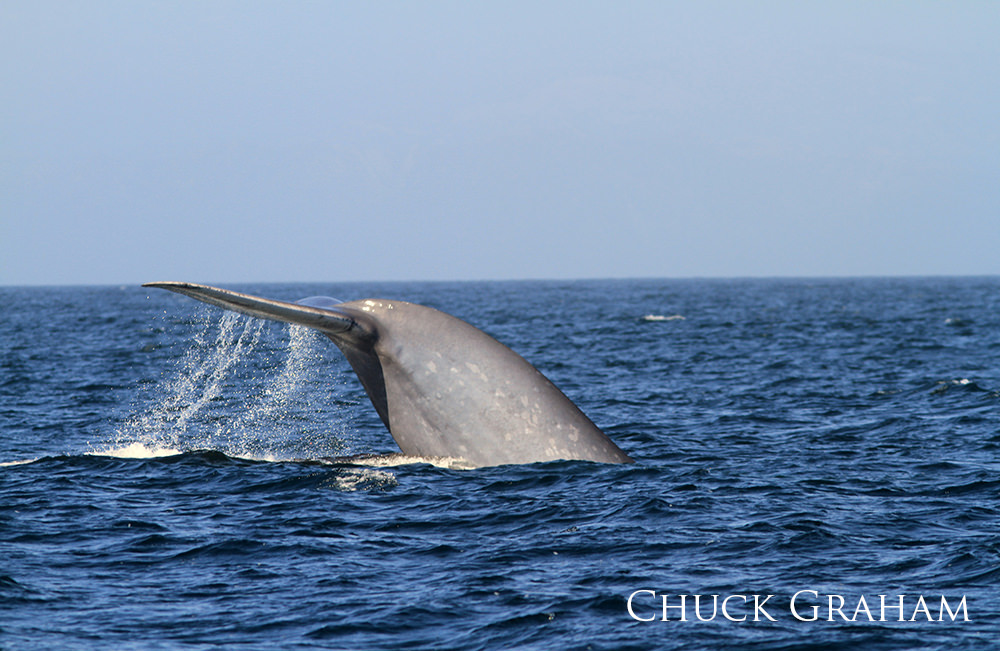Ocean Noise

Most marine animals, including marine mammals, turtles, fish, and invertebrates, rely on sound for survival. Research suggests that anthropogenic (human-induced) noise may alter their behavior, resulting in lower chances of survival and reproduction for individual animals. Noise can lead to long-term effects on individuals and populations because there are reduced opportunities for hearing sounds used for navigation, finding food, finding mates, avoiding predators, and communicating, such as between mothers and offspring and other group dynamics. In addition, increased background noise and acute sound sources can cause physical injury in the form of temporary or permanent hearing loss or tissue damage.
Sources of underwater noise include large commercial shipping traffic such as container ships, freighters, barges, and tankers; smaller recreational and commercial vessels; sonars used in military training; pile drivers and dredging equipment used in marine construction; airguns and other seismic sources used in energy exploration; sonars and other active acoustic sources used in research activities; and aerial sources such as overflights.
This issue is important for national marine sanctuaries on the West Coast, including Monterey Bay National Marine Sanctuary, since the West Coast of North America is one of the busiest container-shipping routes in the world. The Port of Oakland in San Francisco Bay is one of the largest container ports in the United States. In addition, the West Coast has a highly dense and growing human population and many recreational, military, development, and research activities taking place.
Sanctuary Soundscape Monitoring
Monterey Bay National Marine Sanctuary is a partner in the Sanctuary Soundscape Monitoring Project (SanctSound). Within the cacophony of the ocean "soundscape," there is singing of marine mammals, the steady noise of propellers from transiting container ships, and even the sound of rain on the ocean’s surface. Learn more about how scientists are using a network of hydrophones, or underwater microphones, to explore underwater sounds within NOAA’s National Marine Sanctuary System at the SanctSound data portal to listen to sounds recorded in Monterey Bay National Marine Sanctuary.

Aircraft and Uncrewed Aircraft Systems (UAS)
Motorized aerial vehicles, whether traditionally piloted aircraft or uncrewed aircraft systems (UAS), such as model aircraft, quadcopters, and drones, can pose a threat to marine animals due to their ability to access areas generally free of human presence. Aerial vehicles can appear suddenly and cause disturbance by sight, sound, and movement. Therefore, all operators and pilots should avoid flying aircraft or UAS near animals, which includes buzzing, hovering, landing, taking off, or taxiing near marine mammals and birds (on land or in the water), as these actions may alter animal behavior and can harass the animals and cause stress.

Monterey Bay National Marine Sanctuary addresses overflight disturbance through a mix of educational outreach, regulatory, and enforcement actions. Public outreach efforts include promoting responsible wildlife viewing guidelines and coordinating field interpretive volunteer programs Bay Net and Team OCEAN to educate ocean users about preventing wildlife disturbances.
Sanctuary regulations prohibit harassment of marine mammals, turtles, and birds by any means, including disturbance from the air. All of the marine mammal and turtle species, and most birds that frequent the sanctuary, are protected under the Marine Mammal Protection Act, the Migratory Bird Treaty Act, and/or the Endangered Species Act everywhere within the United States and its territories.
In addition to prohibiting the disturbance of marine mammals, turtles, and birds, sanctuary regulations prohibit the operation of motorized aircraft (including model aircraft, quadcopters, drones, etc.) within NOAA regulated overflight zones in the sanctuary. If a flying apparatus of any kind has a motor, then it must remain above 1,000 feet (305 meters) altitude within the four zones. The zones include coastal waters from the mean high tide line seaward to distances of up to 5 nautical miles offshore. For more information about NOAA overflight regulations within Monterey Bay National Marine Sanctuary and other West Coast national marine sanctuaries, visit "Pilots: Know Before You Go!"
Sanctuary regulations allow for the operation of piloted aircraft or UAS within the NOAA regulated overflight zones if aircraft operators receive prior authorization from NOAA’s Office of National Marine Sanctuaries. Permit requests are evaluated based upon the design and purpose of proposed low-altitude flight operations. Permits have been issued for research and education flights that benefit sanctuary resource protection and management. Permits include conditions that limit collateral impacts to wildlife from flight operations. Some flight operations for production of television commercials and film have been authorized where strict controls and careful planning prevent direct and incidental disturbance of wildlife in the project area. To request a permit to operate any motorized aircraft, including UAS/drones, in the NOAA regulated overflight zones, visit permits.
For information about Federal Aviation Administration’s (FAA) policy regarding uncrewed aircraft systems (e.g., model aircraft and drones), visit the FAA’s website.

